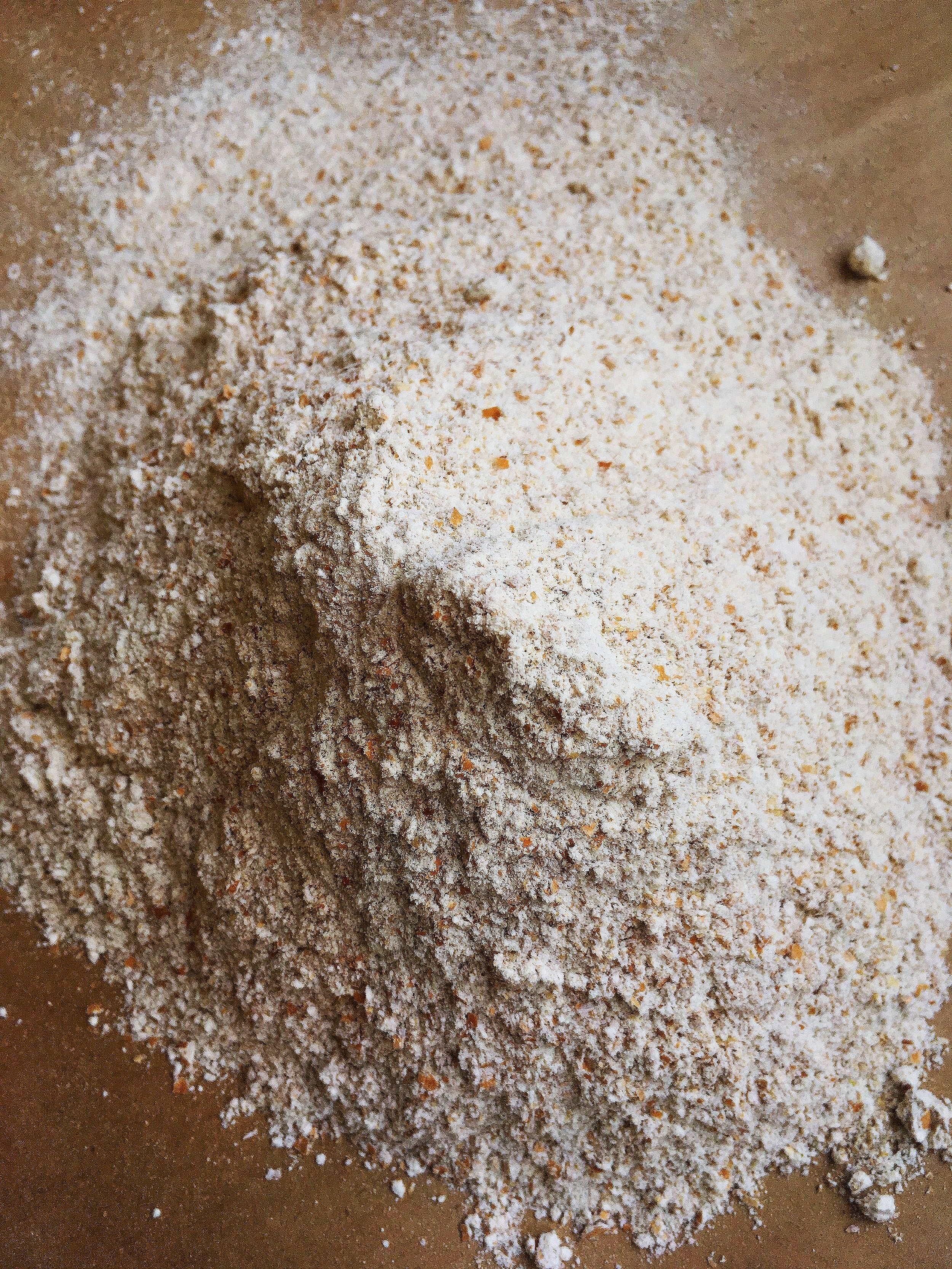Danko Whole Rye Flour
Hilliard Red Whole Wheat Flour
Baking with Flour Milled from Whole Grains: A Few Tips
by Liza Lowery, friend and collaborator
BUY A SCALE: A scale works best for all baking, but with stone-milled whole grains, a scale is particularly recommended. Why?
Stone-milled flours differ in volume from both commercially milled white and whole wheat flours.
From harvest to harvest, and even from bag to bag of the same harvest, stone-milled flour varies: some bags will contain larger bits of bran and germ, others smaller, affecting the volume.
Measuring in cups is inconsistent, and inaccurate measurements will adversely affect the texture and taste of whatever you are baking.
BREAD DOUGH MADE FROM WHOLE GRAIN FLOUR BEHAVES DIFFERENTLY FROM WHITE FLOUR: Date and keep notes on your recipes to help you analyze your successes.
We know that the flavor of dough benefits from a long, slow rise, but the structure of the dough must be strong enough to support itself. White flour inherently yields a stronger structure than whole grain flour. In addition, the bran in whole grain flours can act like shards of glass cutting the gluten strands and causing the dough to collapse. This is especially true if you let your whole grain loaf rise too high.
If you’re interested in learning more sophisticated techniques for working with whole grains, Chad Robertson’s Tartine Book No. 3: Modern Ancient Classic Whole and Peter Reinhart’s Whole Grain Breads: New Techniques, Extraordinary Flavor will provide explanations and recipes.
However, no-knead loaves work well with whole grain flours because kneading dough made from whole grain flour can weaken the structure rather than strengthen it. The simple no-knead peasant bread recipe offered in the recipes section calls for a shorter rise, 1½ hours, and produces a tasty, well-textured loaf.
ADJUST YOUR EXPECTATIONS:
Visually, your creations may not initially look picture perfect, as in a magazine, but with practice, they will be pretty, too. With breads, don’t expect dramatic oven spring, but instead compensating flavor. With cakes and pastries, don’t expect sunny golden brown tops and edges, but instead more muted hues.
Think about making tasty food, not “health foods.” If your flour has been ground from grains carefully grown, everything you bake will be both healthy and tasty. Enjoy the nuttier, sometimes sweeter, invariably complex nuances of heirloom and whole grains.
BE PATIENT:
Stone-milled flours absorb water differently from commercially milled flours. Some flours need more water to hydrate and others need considerably less. Even from day to day if the weather is humid or dry, the absorption may differ. When making bread, a goopy dough is not necessarily a bad thing; in fact, it will yield a loaf with a nice loose crumb. If you’re using a favorite recipe for pancakes or muffins, add liquid slowly, and stop when the consistency of your dough or batter seems right. You may need to make a recipe a few times before it’s just the way you like it.
Experiment with different flours and different combinations of flours until you find the flavor profiles you prefer. You may want to start with substituting small amounts of whole grain flours for white flour in a recipe. Even fifty grams of whole grain flour will add flavor to your breads and cookies and cakes. Moreover, you will discover that grains are like grapes and flours like wines: each variety of grain is affected by the soil, the sun, the rain, the temperature, the season, the forever-changing climate, and, of course, the milling process. From the hands of conscientious farmers to the hands of happy bakers, comes pleasure: through beautiful grains, a better planet.




